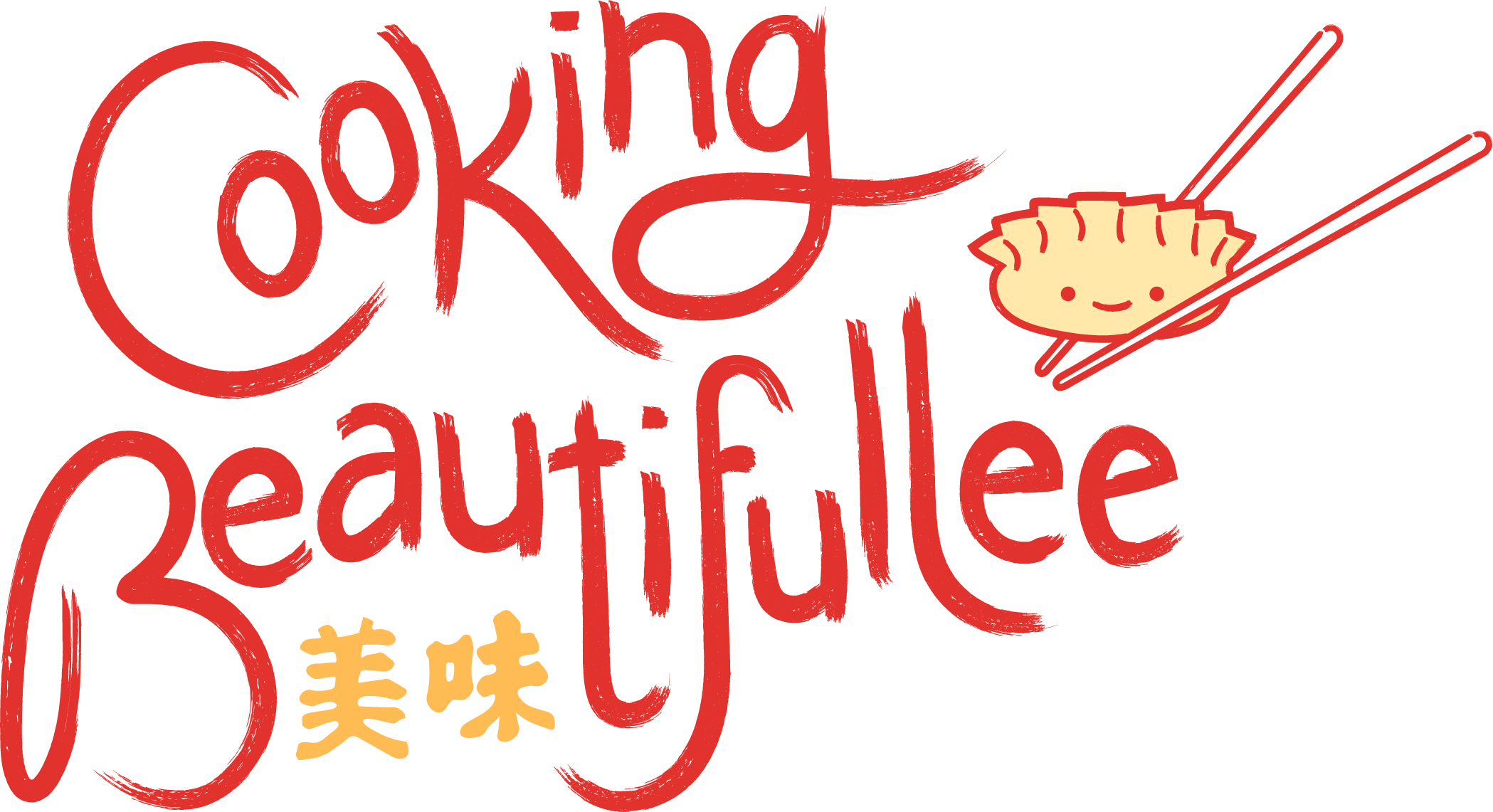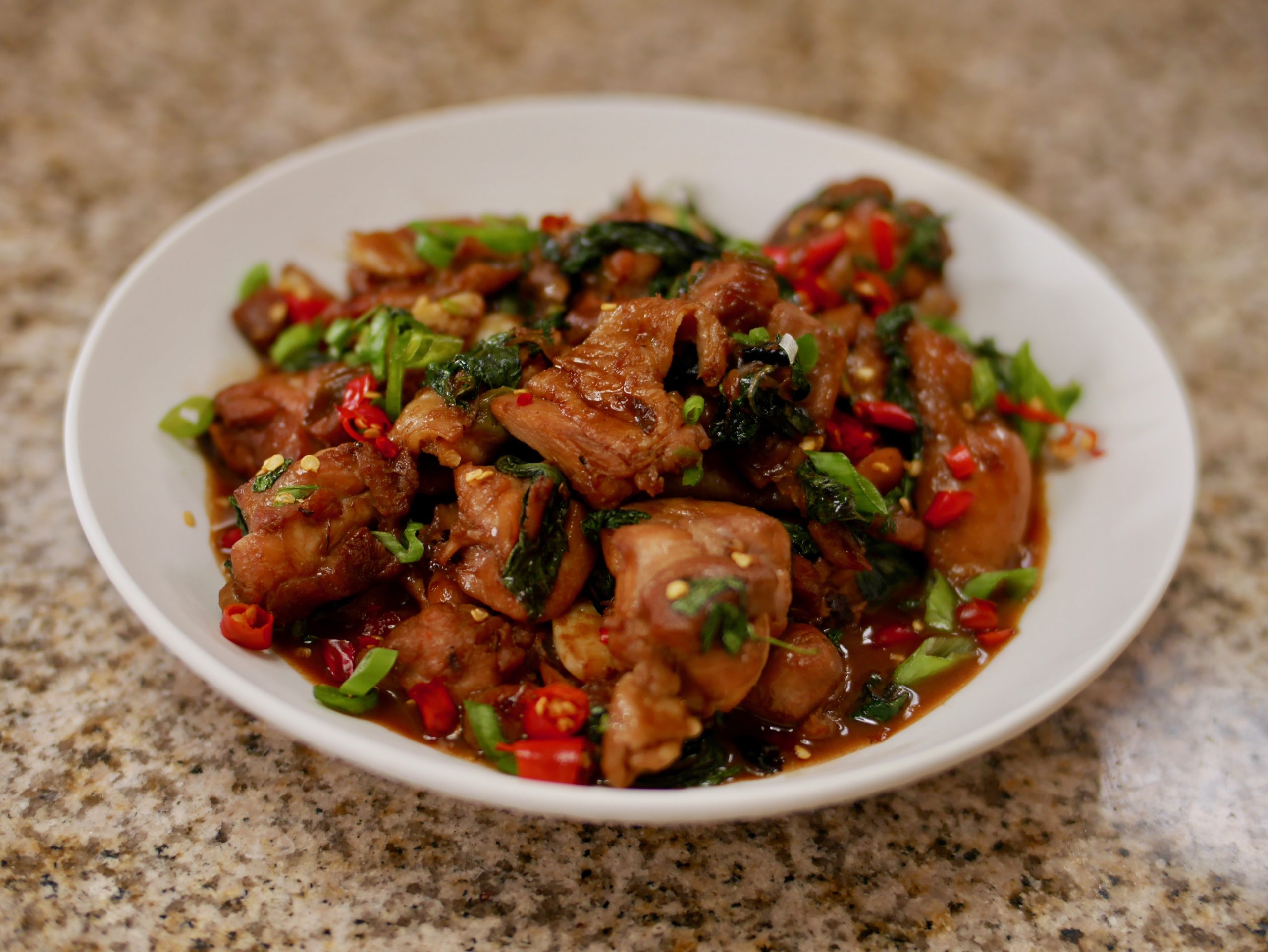Taiwanese Three-Cup Chicken
A loyal follower requested that I make Three-Cup Chicken on our cooking channel, and I can’t say no. Why? Because it’s an iconic Taiwanese dish that I grew up eating. Every time I smell the dish’s aroma from ginger, Thai basil, and sesame oil, I have memories of visiting the night market in Taipei.
I haven’t cooked any Taiwanese dishes on my channel, and you might be wondering, why not? Well, sometimes the food you love the most can be the hardest to cook. Not in terms of technique, but because of the pressure I put on myself to teach people to cook such an iconic Taiwanese dish. I was concerned that Taiwanese audience might be critical and think the way I cook it is not the authentic version of three-cup chicken.
To cook or not to cook? That is the question! After careful consideration, I decided to cook three-cup chicken on my cooking channel, but I am not going to claim it’s an “authentic” recipe. In fact, I don’t think we should market any dish as an “authentic” dish. Food in Taiwan constantly evolves. When the Japanese government ruled Taiwan for fifty years, from 1895 to 1945, our food was under the influence of Japanese cuisine. After the Chinese Civil War, In 1949, Chiang Kai-shek’s government and army retreated to Taiwan from China. The veterans, who came from a variety of Chinese states, brought their cuisine, making Taiwan a melting pot. If you ask twenty Taiwanese people to cook three-cup chicken, you get twenty different recipes.
What’s in a name? In three-cup chicken, those “three-cups” mean one cup of sesame oil, one cup of soy sauce, and one cup of Taiwanese rice wine. The ratio of sesame oil, soy sauce, and rice wine is not like the name: one cup each. If you cook your chicken that way, it will be too greasy and salty.Follow my recipe, I promise it will work!
Those three ingredients are very important. I know American chefs who cooked this dish with Shaoxing rice wine, which is not typical in Taiwan. Shaoxing wine has a stronger taste and flavor and is an amber color. I prefer using it when I cook drunken chicken or drunken prawns. I think Japanese sake is a better substitute. Sake is made from fermented rice and is clear in color. The flavor profile is more subtle.
There is even debate as to how to begin this dish! Should it be spicy? Should it be sweet? How long should you cook the ginger? What kind of sesame oil? I’ve seen many recipes, and my favorite is a spicy recipe from the New York Times cooking columnist, Sam Sifton. He uses a method similar to cooking Kong Bao Chicken (宮保雞丁). When cooking this dish, the chili’s aroma is very important. You need to cook the peppers until fragrant in the wok, and then scrape the peppers. I found this technique very useful when making three-cup chicken. I love this dish so much that I can eat it for breakfast, lunch, and dinner.
This is my take of three-cup chicken, adopted from Sam Sifton. I hope you will like it!
Taiwanese Three-Cup Chicken
Equipment
- Chef’s knife
- Cutting board
- Measuring cups and spoons
- Several small bowls
- Chinese wok
- Medal specula
Ingredients
- 3 tablespoons sesame oil
- 1 2-to-3- inch piece of ginger peeled and sliced into coins, approximately 12
- 12 cloves of garlic peeled
- 4 whole scallions trimmed and cut into 1-inch pieces
- 3 dried red peppers or 1 teaspoon red pepper flakes
- 2 pounds chicken bone-in thighs and drumsticks cut into bite-size pieces
- 4 cube unrefined Taiwanese rock sugar
- ½ cup rice wine
- 2 tablespoon light soy sauce
- 2 tablespoon dark soy sauce
- 2 cups fresh Thai basil leaves
- 2 ~3 Fresh Thai bird chilies
Instructions
- Heat a wok over high heat and add 2 tablespoons sesame oil. When the oil shimmers, add the garlic and peppers and cook until fragrant for approximately 2 minutes.
- Scrape the aromatics to the sides of the wok and add remaining oil and allow to heat through.
- Add scallions and garlic and cook until fragrant.
- Add the chicken and cook for about 5 to 7 minutes, stirring occasionally, until it is browned and crisping at the edges.
- Add sugar and stir to combine, then add the rice wine and soy sauce and bring it to a boil.
- Lower the heat, then simmer until the sauce has reduced and started to thicken for approximately 15 minutes.
- Turn off the heat, add the basil and Thai bird chilies and stir to combine.
- Serve with white rice.
Notes
Chef’s Tip
If you can’t find Thai basil, Italian basil will work just fine. In terms of the aroma, I prefer Thai basil over Italian basil, but I encourage you to cook with whatever you can get from your local supermarket. Don’t give up just because you can’t find one herb. Taiwanese sock sugar is often used in Taiwanese cooking, just like palm sugar is essential for Thai cooking. Taiwanese people like it because it’s more subtle than cane sugar. It is not an easy ingredient to find. It is totally fine to use 1 table spoon of regular cane sugar or brown sugar for this dish.Want to learn how to master this Taiwanese dish? Book a virtual cooking class with me!

Melissa Lee
Chief Entertainment Officer
Melissa is 100% MIT (Made in Taiwan), where she worked as a food writer. She’s also worked alongside renowned chefs like Ming Tsai and Joanne Chang, honing her craft and gathering stories along the way. Part story-teller, part educator, and part food lover, Melissa brings a special blend of experience, skill, and enthusiasm to her work. She blends her Asian background, her new home of New England, and love of food and culture to bring joy, optimism, and inspiration to food lovers and fun-seekers everywhere.
What sparked your passion for the industry?
The desire to make things by hand. The joy of sharing delicious, hearty food with students. The opportunity for people to get connected via cooking and baking. When a child smiled broadly and told me it’s the best scone he has ever made and eaten, it really made my day!
In your opinion, what’s the most important course?
Well, I usually take a peek at the wine list first. I like tapas style, so the course doesn’t really matter. Cheese and charcuterie are always a good place to start. And since I’m a pastry chef, there is always room for dessert!
Bill Gates is picking up your tab, where would you go?
Noma, Copenhagen.


I love this recipe and your explanation of ingredients and techniques! One small item, though (which happens to be a pet-peeve of mine and my son), is that “Thai” is not the same as “Taiwanese” and refers only to Thailand. This is a common mistake that many non-Asians make. Being Taiwanese-American, I hear this mix-up often. It’s just one of those things that bothers me as I and my family try to express how unique Taiwan is.
That being said, I do appreciate your posting this wonderful recipe and teaching cooks about the origins and what gives this classic Taiwan dish it’s beautiful flavor!
Dear Linda, Thanks so much for your feedback. I can’t agree with you more. I love both Thai food and Taiwanese food. They are both unique and beautiful in its own way!
My previous remark refers to the second paragraph in the Tips section–not the Thai basil! 😉